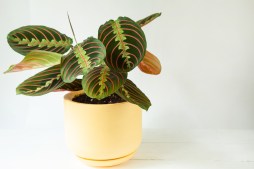Effective Techniques for Identifying Common Garden Pests

Gardening is a rewarding hobby, but it comes with its share of challenges—especially when it comes to pests. Identifying common garden pests early can save your plants from damage and keep your garden thriving. This article explores effective techniques to recognize these unwelcome visitors so you can take timely action.
Know the Signs of Pest Damage
One of the first steps in identifying garden pests is observing the damage they leave behind. Look for holes or chewed edges on leaves, discolored or wilted foliage, and stunted growth. Some pests leave distinctive marks; for example, spider mites cause tiny yellow spots on leaves, while aphids often cause curled or distorted leaves.
Familiarize Yourself with Common Garden Pests
Understanding which pests are common in your area helps narrow down possibilities. Common garden pests include aphids, caterpillars, slugs and snails, spider mites, whiteflies, and beetles. Each has unique characteristics —for instance, aphids are small green or black insects that cluster on new growth whereas slugs leave a slimy trail and chew irregular holes in leaves.
Use Visual Inspection Techniques
Regularly inspect your plants closely using a magnifying glass if necessary. Check both sides of leaves since some pests hide underneath them during the day. Early morning inspections are ideal because many insects are less active then. Also look around the base of plants and soil surface where some larvae or eggs might be found.
Employ Traps and Monitoring Tools
Sticky traps can help detect flying insects like whiteflies or fungus gnats by catching them as they move around your garden. Yellow sticky cards are especially attractive to many pest species and can alert you before populations grow too large. Additionally, pheromone traps target specific moth species by mimicking their mating scents.
Seek Expert Resources and Identification Guides
When uncertain about a pest’s identity, consult gardening books focused on pest management or online databases with pictures and descriptions of common garden pests. Local cooperative extension services often provide free identification assistance based on photos you send them along with advice tailored to your region’s conditions.
By mastering these techniques to identify common garden pests early on, you empower yourself to protect your plants more effectively without relying heavily on chemicals. Regular observation combined with knowledge ensures a healthier garden that flourishes season after season.
This text was generated using a large language model, and select text has been reviewed and moderated for purposes such as readability.











